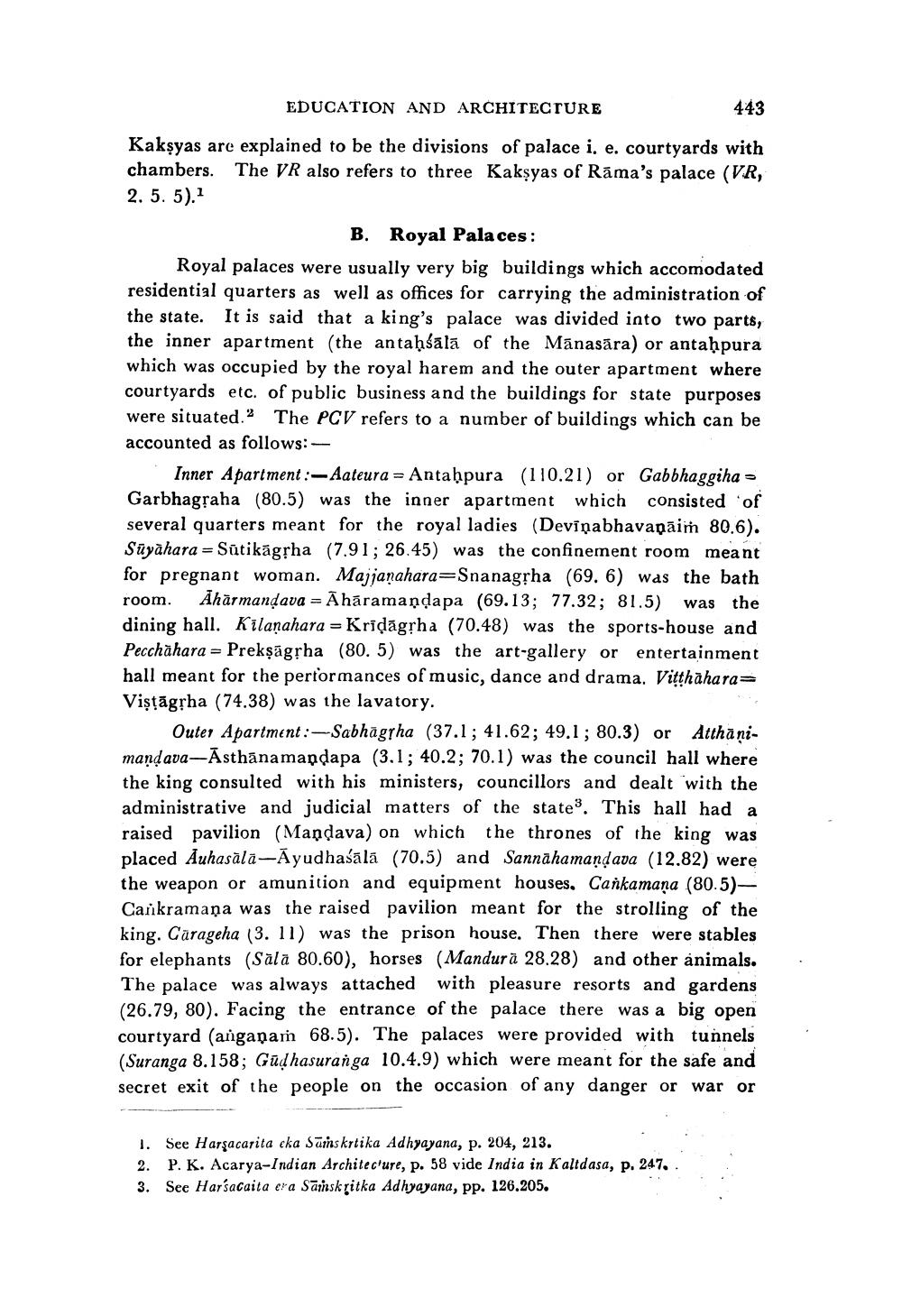________________
EDUCATION AND ARCHITECTURE
443
Kakşyas are explained to be the divisions of palace i. e. courtyards with chambers. The VR also refers to three Kakşyas of Rāma's palace (VR, 2. 5. 5).
B. Royal Palaces: Royal palaces were usually very big buildings which accomodated residential quarters as well as offices for carrying the administration of the state. It is said that a king's palace was divided into two parts, the inner apartment (the antaḥśālā of the Mānasāra) or antaḥpura which was occupied by the royal harem and the outer apartment where courtyards etc. of public business and the buildings for state purposes were situated. The PCV refers to a number of buildings which can be accounted as follows: -
Inner Apartment :- Aateura = Antaḥpura (110.21) or Gabbhaggiha - Garbhagraha (80.5) was the inner apartment which consisted of several quarters meant for the royal ladies (Devinabhavanāim 80.6). Süyahara = Sütikāgļha (7.91; 26.45) was the confinement room meant for pregnant woman. Majjanahara=Snanagļha (69. 6) was the bath room. Ahārmandava = Āhāramaņdapa (69.13; 77.32; 81.5) was the dining hall. Kilanahara = Kridagpha (70.48) was the sports-house and Pecchahara = Prekşāgrha (80.5) was the art-gallery or entertainment hall meant for the pertormances of music, dance and drama. Vitthahara= Viștāgļha (74.38) was the lavatory.
Outer Apartment:-Sabhägrha (37.1; 41.62; 49.1; 80.3) or Atthanimandava-Asthānamandapa (3.1; 40.2; 70.1) was the council hall where the king consulted with his ministers, councillors and dealt with the administrative and judicial matters of the state. This hall had a raised pavilion (Mandava) on which the thrones of the king was placed Auhasālā--Āyudhasala (70.5) and Sannahamandava (12.82) were the weapon or amunition and equipment houses, Cankamana (80.5) Caikramana was the raised pavilion meant for the strolling of the king. Carageha (3. 11) was the prison house. Then there were stables for elephants (Sala 80.60), horses (Mandur ä 28.28) and other animals. The palace was always attached with pleasure resorts and gardens (26.79, 80). Facing the entrance of the palace there was a big open courtyard (anganan 68.5). The palaces were provided with tunnels (Suranga 8.158; Gūdhasuranga 10.4.9) which were meant for the safe and secret exit of the people on the occasion of any danger or war or
1. See Harşacarita eka Sūnskrtika Adhyayana, p. 204, 213. 2. P. K. Acarya-Indian Architec'ure, p. 58 vide India in Kaltdasa, p. 247 3. See Harśacaita era Sanskritka Adhyayana, pp. 126.205.




